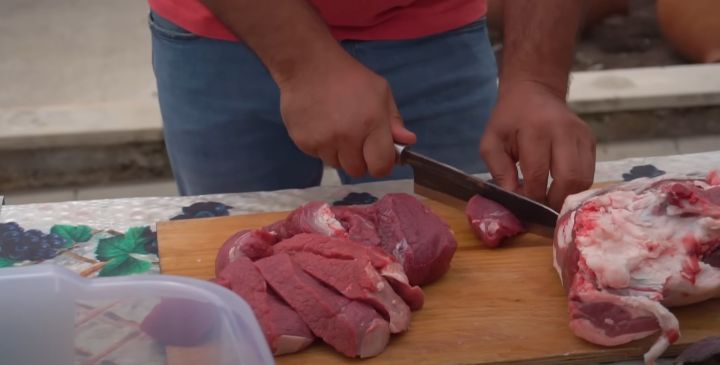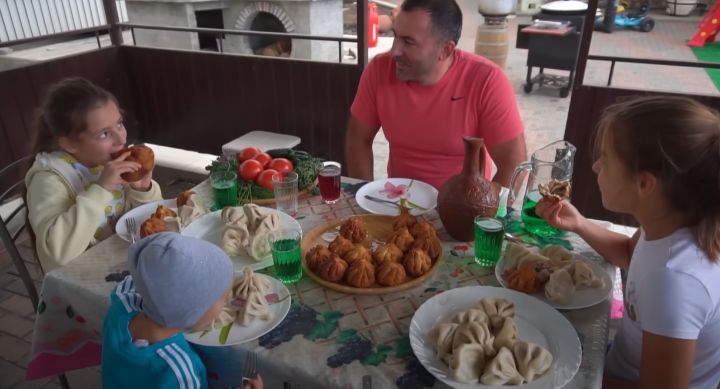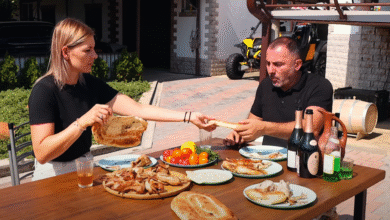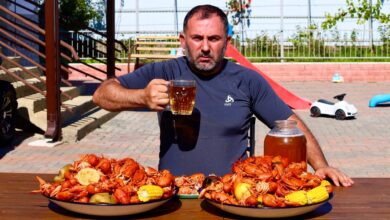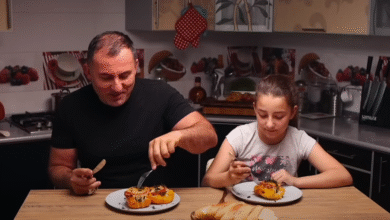Food
Khinkali – traditional Georgian dumplings: GEORY KAVKAZ
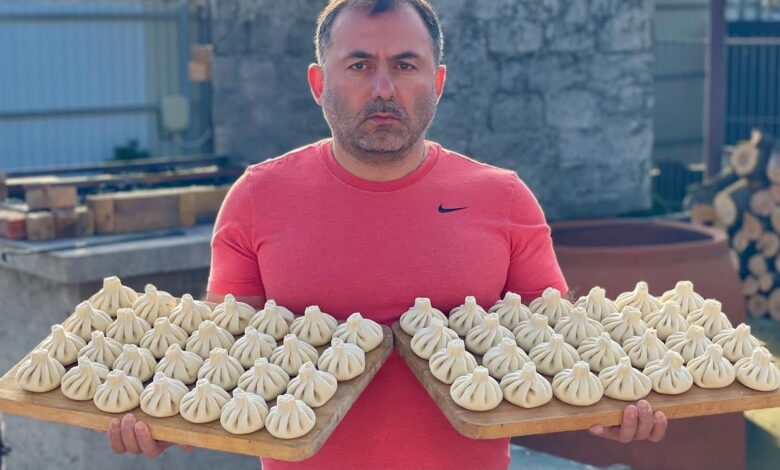
1. INGREDIENTS (Makes ~20–25 Khinkali)
Dough:
- 500 g all-purpose flour
- ~240 ml water (adjust for firm but pliable dough)
- 1 tsp salt
Filling:
- 300 g ground beef
- 200 g ground lamb
- 1 large onion, finely chopped
- 1 tsp salt
- ½ tsp black pepper (freshly ground)
- Optional: a splash (1–2 tbsp) of water or broth for juicy filling
2. PREPARE THE DOUGH
- In a bowl, mix flour and salt.
- Gradually pour in water while stirring until a ball forms.
- Turn onto a lightly floured surface; knead for about 8–10 minutes until smooth and elastic.
- Cover with a damp towel and let rest for 20–30 minutes.
3. MIX THE FILLING
- In a bowl, combine ground beef and lamb.
- Add chopped onion, salt, pepper, and optional liquid.
- Mix thoroughly using your hands for even distribution and slight stickiness.
4. ASSEMBLE THE KHINKALI
- Divide dough into workable portions.
- Roll each into a thin sheet (~2 mm).
- Use a glass or cutter (~8–10 cm diameter) to cut circles.
- Place ~1–1.5 tbsp filling in center of each circle.
- Pinch pleats around the top—forming 18–20 folds—to seal the dumpling and create a firm top knot.
- Ensure no leaks; top knot stays intact during cooking.
5. COOKING & SERVING
Cooking:
- Bring a large pot of salted water to a rolling boil.
- Add khinkali, stirring gently to prevent sticking.
- Boil until they float, then cook another 5–7 minutes depending on size.
- Stir occasionally to prevent sticking.
Serving:
- Remove with a slotted spoon; drain excess water.
- Serve hot on a platter, traditionally without sauce.
- Eat by holding the top knot, biting a small hole, drinking the juices, then enjoy the filling. Discard the doughy “hat” or eat it last.
✅ TIPS & VARIATIONS
- Meat mixture: A blend of beef and lamb provides best flavor—adjust ratio to taste.
- Juicy filling: Adding broth creates a soupy interior.
- Perfect seals: Pleat tightly to prevent leaks; ensure dough elasticity.
- Size adjustments: Mini khinkali cook faster (~4–5 min post-floating).
- Resting dough: Rest time makes rolling and pleating much easier.

